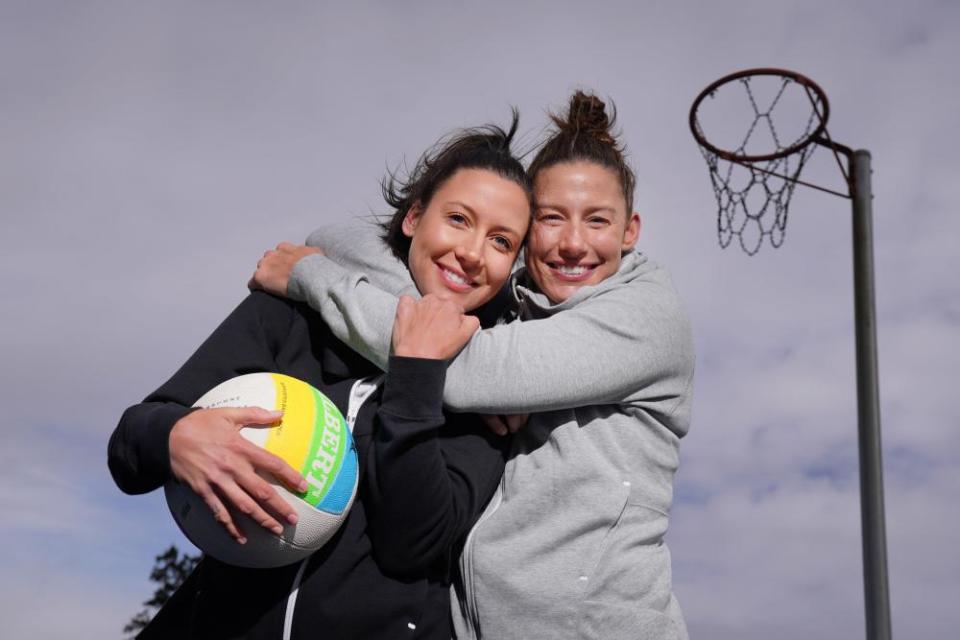Madi Browne calls time after shining as one of the brightest gems in netball

Midway through the 2019 Super Netball season, the Collingwood Magpies suffered a disappointing 16-goal loss to the NSW Swifts in Sydney. As the players warmed down and prepared to leave the arena, a lone figure who had been sitting behind the bench began to collect bags and belongings, hauling gear back to the changerooms. It could have been a junior member of staff, tasked with tidying up, but it was not. It was the team’s injured co-captain Madison Browne.
Much like the champion All Blacks, whose senior players sweep out the sheds after every match, humility has been a hallmark of Browne’s elite netball career. While sitting out the 2019 season following a knee reconstruction, she was quietly supportive, picking up those little tasks like carrying equipment that, while important, often go unnoticed.
Related: Attack the first issue to address as Stacey Marinkovich takes on Diamonds role | Erin Delahunty
As a netballer, Browne has no need to be humble. She is one of the game’s most decorated players, the only player to win the coveted Liz Ellis Diamond twice – in 2012 and 2014. With 61 caps for the Diamonds and Commonwealth Games gold and silver medals to her name, she will go down in history as one of netball’s brightest stars.
It’s an incredible journey, especially considering Browne was diagnosed with chronic juvenile arthritis in her knees as a toddler and was facing a lifetime of pain. Against the odds she was able to recover and found joy in movement, throwing herself into a variety of activities.
But her path to the top was to be marked with adversity. Soon after her debut as an 18-year-old, the landscape of Australian netball changed enormously and the two Melbourne teams – the Phoenix and Kestrels – merged to form the Vixens and Browne found herself stuck on the bench.
These days it is quite common for players to move around the country seeking more court time, but in 2009 it was a rare occurrence. It did not deter Browne. She linked up with her former Kestrels coach Jane Searle at the West Coast Fever and made the big move over to Perth. It was a tough two years with very few wins to celebrate, but it was the making of Browne as a player and allowed her to return to Melbourne to claim a starting position at the Vixens in 2011.
Overlooked for the Australian team to play in the 2011 Netball World Cup, Browne was devastated, but it spurred her on to take her game to the next level. 2012 was the year she truly announced her arrival, playing with such incredible speed, grace and fearlessness that she could not be ignored. That year she became the first player to win all three major prizes at the Netball Australia awards.

In the book Shine: The Making of the Australian Netball Diamonds, Browne credits a shift in mindset for her on-court transformation. “I think it might have been the mental edge, the maturity, the learning, the added self-belief that told me, ‘You know what? I play netball because I love it. It doesn’t matter about the other stuff,’” she said.
From that point onwards, Browne became synonymous with the Diamonds. She embodied the values of the team in every aspect of her life – sisterhood, respect, hard work, excellence. Despite her diminutive height of 168cm, she was able to dominate on the world stage with her speed, footwork and pinpoint accuracy. As a wing attack, she set the standard for those who came after her.
Surprisingly – considering her elite career has spanned 14 years – there is one accolade that has eluded her. Browne is arguably the greatest Diamond to have never played in a Netball World Cup. After the disappointment of missing out in 2011, she suffered a season-ending anterior cruciate ligament injury in 2015 and was forced to the sidelines as her teammates won gold on home soil in Sydney. It was a setback she accepted with her trademark humility, turning up to support her ‘sisters’ and delighting in their glory.
Browne’s later years in the game have been quieter, more subdued. Joining Collingwood’s team of stars in 2017 as its inaugural captain she has faced a barrage of criticism about the team’s underperformance with unending grace.
When she suffered a second ACL injury in 2019 and was forced to spend the entire season on the sideline, she responded with strength. Returning to the court in 2020 to finally play alongside her sister Kelsey in black and white, she has looked for all money like that little girl who found joy in movement all those years ago.
She walks away from the game a champion in every sense of the word. In the ultimate team sport, Madison Browne was the ultimate team player. She leaves a legacy that will not be quickly forgotten.

 Yahoo Sport
Yahoo Sport 





































